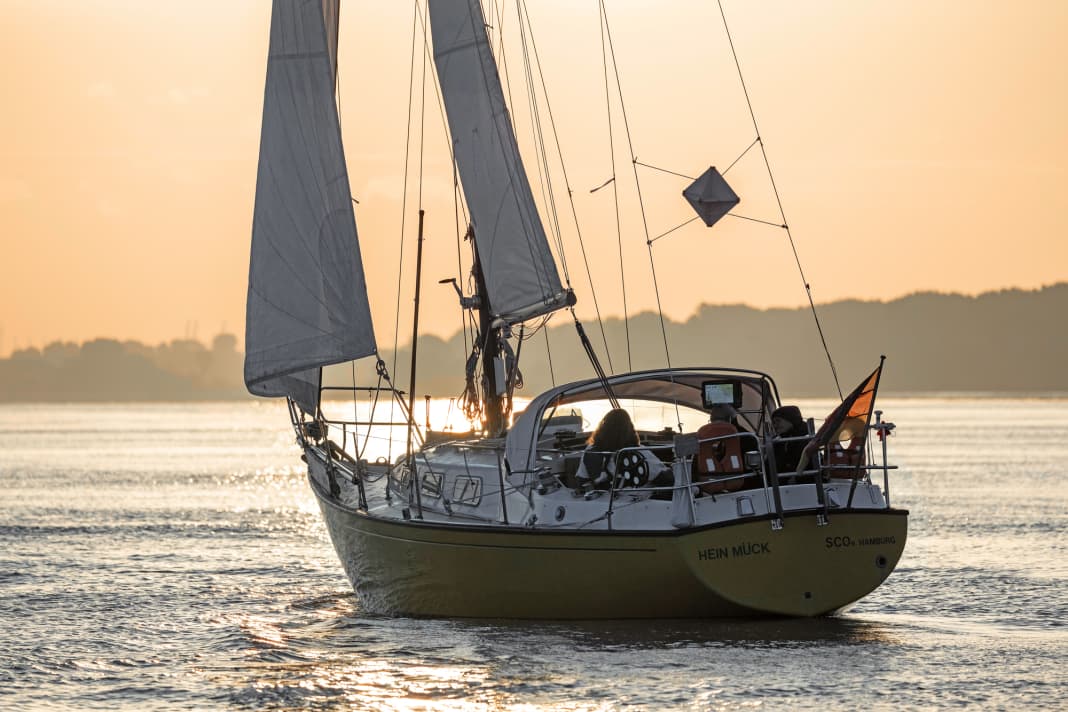





Who needs a passive radar reflector in the age of AIS? Thanks to modern electronics, you are highly visible on the screens, certainly on those of commercial shipping. Well, the question seems justified at first glance. On closer inspection, however, the answer is clear: everyone who is on the water with commercial shipping needs such a device. This is because AIS technology is dependent on a power supply - if this fails, the yacht is no longer visible. Passive radar reflectors work at all times. What's more, there are some areas, such as the Waddenzee in the Netherlands, where a radar reflector is simply mandatory.
Not much has changed in terms of products in recent years. On the market, the Tin cube which Tubes and the Echomax. There was also a device called Trilens. This reflector is now sold under the name 3Lenzz offered again.
But how good is the performance of the reflectors in practice and when it is not a question of being seen by large devices on the bridge of a commercial vessel, but by a less powerful yacht radar? First of all, it is difficult to make generalisations and the conclusions must be formulated precisely.
The problem is explained using an example: the 3Lenzz consists of three spheres that are mounted at an angle of 120 degrees to each other. A test by the British coastguard had already shown that it has a blind spot every 120 degrees. If radar signals hit this blind spot, the echo on the screen disappears. All reflectors have such blind spots, to a greater or lesser extent. During our test, we recognised the 3Lenzz by the fact that the echo was clearly visible, disappeared for a few orbits and then reappeared. The test boat was obviously close to a blind spot on the reflector. In practice, this would be the case when approaching with an exact bearing, for example when a ship is travelling towards an anchor berth that is not swinging. However, if the angle between the two changes by just a few degrees, there is an echo.
The conclusion that it doesn't work well because it was sometimes poorly visible in the test would not be the whole truth. The echoes were clear when measured from a different position. The conclusion is therefore that the 3Lenzz delivers good results with changing courses of approach and only shows weaknesses at three points on the full circle.
To simulate the situation on a sailing boat, we measured each reflector vertically and at an angle of 30 degrees. Here, too, some models showed weaknesses. In particular, the models with an already small reflective surface sometimes collapsed significantly. However, even the weakest reflector ensured that our test pontoon appeared on the radar screen.
This is how we tested
The echo of each reflector was measured a total of eight times - from a distance of 0.5 and 1.5 nautical miles, vertically and at an angle of 30 degrees, using a modern broadband radar and a conventional magnetron radar. The displays of the broadband radars are shown in the individual test images. Measurements were taken from a motorboat on which both antennas were installed. The reflectors were installed at a height of around three metres on a pontoon on a wooden mast, which could also be tilted. The results were then saved using a screenshot on the Garmin devices used; these were radars commonly used on yachts. We optimised the settings of the radar unit for the medium-sized sheet metal reflector and did not change them in the further course of the test in order to ensure the same conditions for all reflectors. We only tested the two inflatable reflectors in an upright position, as these are usually suspended.
11 radar reflectors in the test: the results
Plastimo sheet metal small
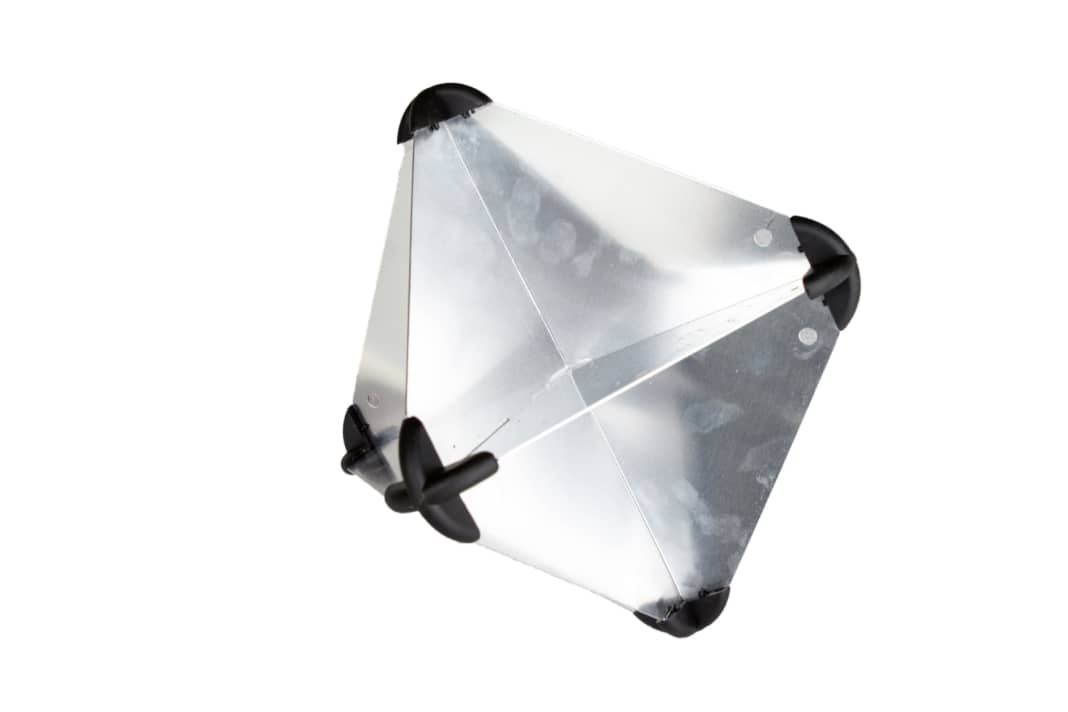


At close range, it is always easily recognisable on both devices. At greater distances, it is not visible in a vertical position; echoes only became visible when the mast was tilted. For an optimum echo, the reflector must be mounted in the rain catcher position, but this can only be the case either in an upright or tilted (in the test) position. Mounting is difficult, the metal sheets are sharp-edged.
- Weight: 0.45 kg
- Reflective surface, total: 3.0 m²
- Price: 33,92 €
- Distribution: Bukh Bremen
- Dimensions: 215 x 215 x 280 mm
- Rating: ***
Plastimo sheet metal RORC
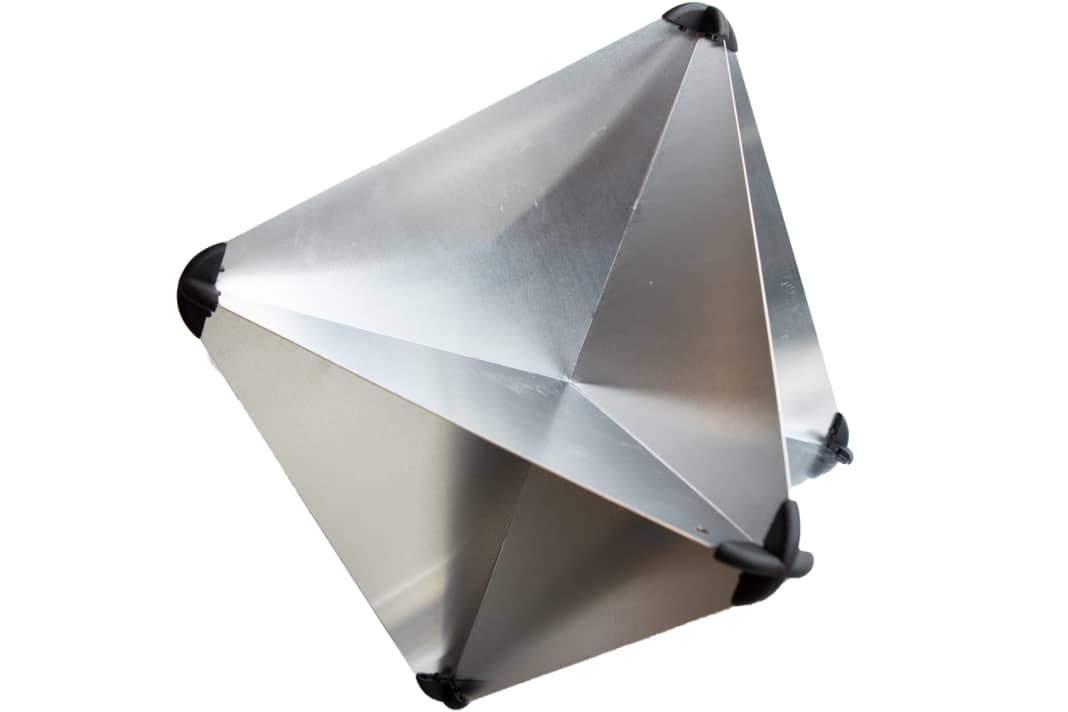


The big brother is consistently easier to recognise on both devices at close range. From a greater distance, the solid-state radar struggles with reproduction. On the radar, the reflector cannot be seen in an upright position; when the boat is heeled over, it blends in with the tug echo. The reflector is very large. There is no opening on the inside to feed a stage through; the installation of the reflector on a sailing boat is unclear.
- Weight: 1.0 kg
- Reflective surface, total: 7.0 m²
- Price: 52,48 €
- Distribution: Bukh Bremen
- Dimensions: 340 x 340 x 470 mm
- Rating: ***
Echomax EM 12
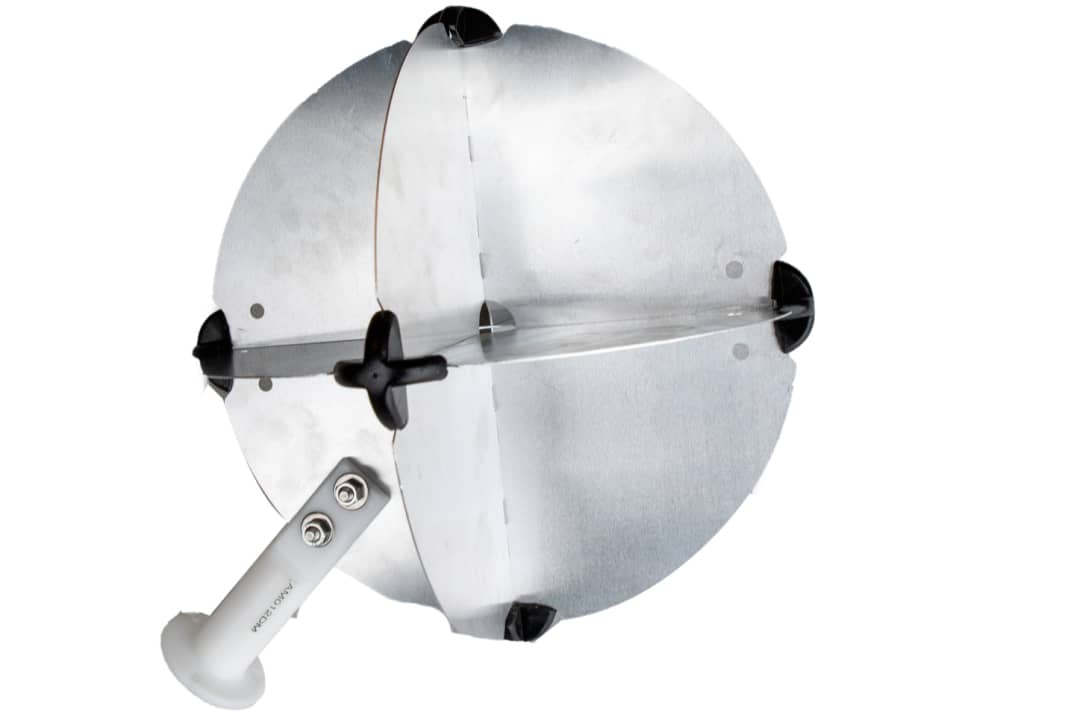


Good visibility at both distances. A rather weak echo when measured upright on the magnetron radar. At the greater distance, the reflector also clearly stands out from the echo of the tug. Mounting is easy, a foot helps with mounting on the spreader, for example. A spherical cut-out in the centre makes mounting on the stay easier as it can be threaded through. The plates are not sharp-edged.
- Weight: 0.73 kg
- Reflective surface, total: 5.5 m²
- Price: 80,50 €
- Distribution: Lindemann KG
- Dimensions: 360 mm
- Rating: ***
Mobri S2
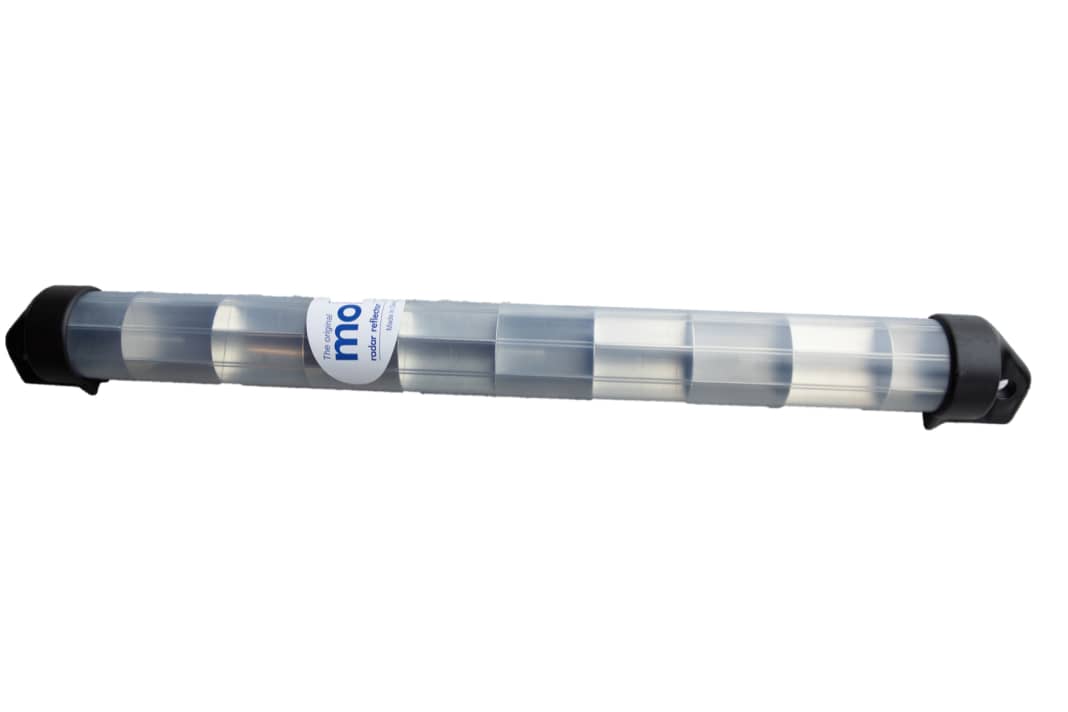


The rod is only visible as an echo from a short distance, but it is always equally good, regardless of whether it is vertical or inclined. At greater distances, it is invisible on the semiconductor radar. Only the magnetron radar can detect an echo in a vertical position. The reflector is lightweight and easy to install. However, it is more expensive than the similarly performing Plastimo tube. A base for mounting on deck is available.
- Weight: 0.38 kg
- Reflective surface, total: 2.0 m²
- Price: 49 € (as of 8/2022)
- Distribution: Lankhorst Hohorst
- Dimensions: 50 x 570 mm
- Rating: **
Plastimo pipe small
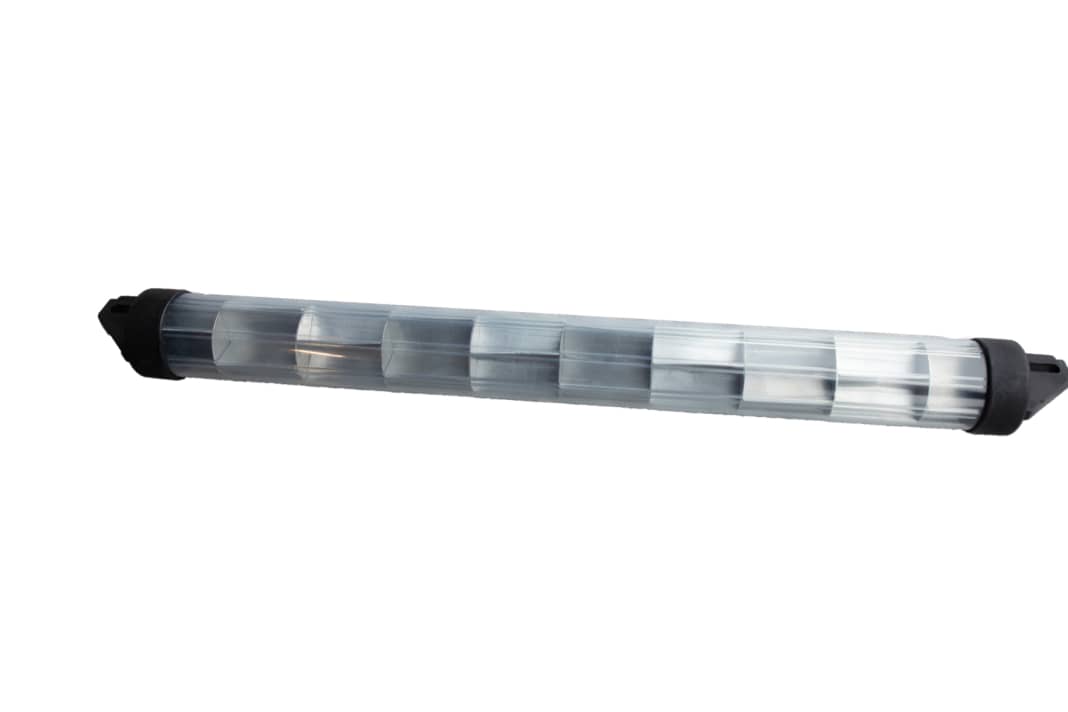


At close range, the Plastimo tube is reasonably visible, but the echoes are visibly weaker compared to the Mobri tube. At greater distances, an echo is only recognisable in a vertical position and on the semiconductor radar. The tube therefore reacts sensitively to heeling. Some of the aluminium plates inside are severely bent and not aligned at right angles. Lightest reflector in the test field.
- Weight: 0.25 kg
- Reflective surface, total. 2,0 m²
- Price. 36,53 €
- Distribution: Bukh Bremen
- Dimensions: 50 x 580 mm
- Rating: *
Mobri S4
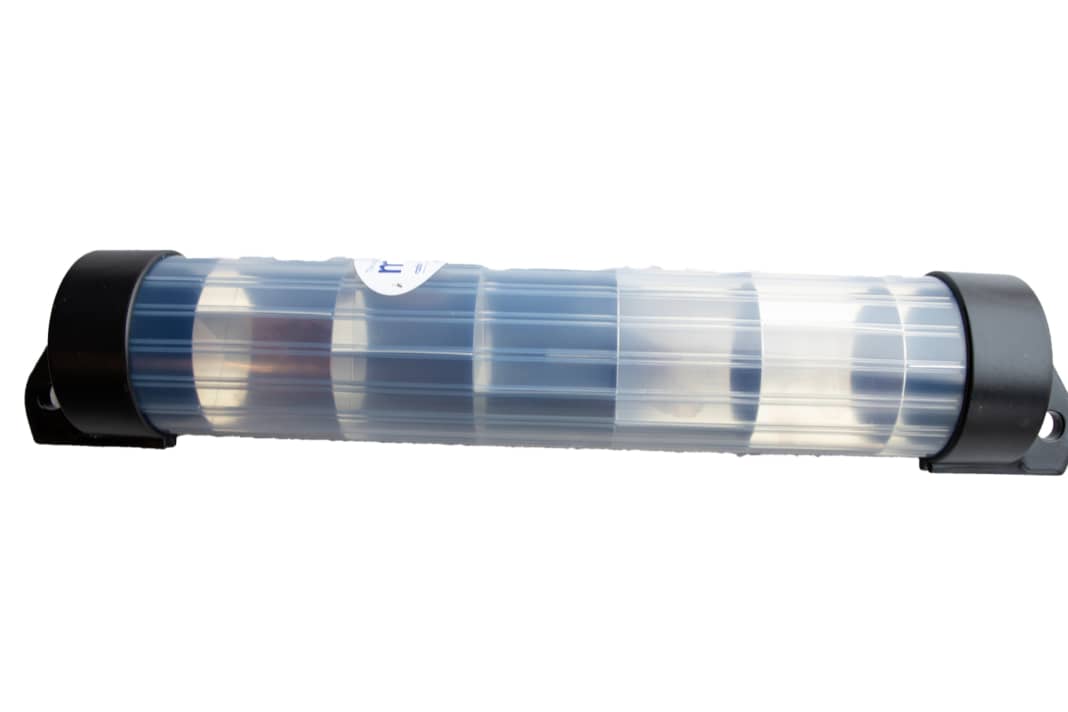


Same picture as its little brother: no visibility at a distance of 1.5 nautical miles. Only the magnetron radar in vertical position shows a slight echo. However, the Mobri is clearly visible at close range. The twice as large reflective surface compared to the smaller version does not result in a better echo. The extra weight and price are therefore not worth it. Also available with base.
- Weight: 0.88 kg
- Reflective surface, total: 4.0 m²
- Price: € 95 (as of 8/2022)
- Distribution: Lankhorst Hohorst
- Dimensions: 100 x 590 mm
- Rating: *
Plastimo pipe large
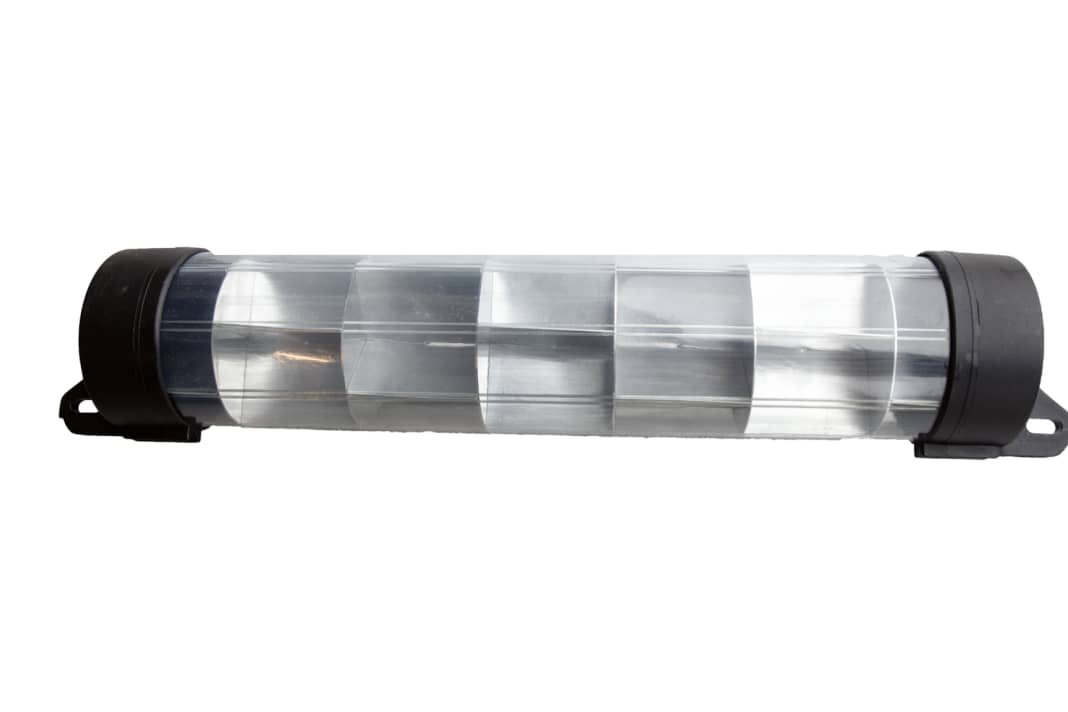


The same picture as with the competitors in tube form: At short distances, the image is usually good, although very small echoes occur with magnetron radar; at greater distances, they are almost completely invisible. Here too, the larger reflective surface does not result in a better echo. The aluminium plates inside are also bent and not mounted at right angles. The workmanship does not look very high quality due to the burrs on the plastic.
- Weight: 0.90 kg
- Reflective surface, total: 4.0 m²
- Price: 62,83 €
- Distribution: Bukh Bremen
- Dimensions: 100 x 590 mm
- Rating: *
Echomax 230 BR



The very large device is the only reflector that produces an echo under all conditions and regardless of the radar technology. However, these are sometimes rather weak, especially if the reflector is tilted. If the reflector is upright, very good echoes are consistently displayed. The Echomax is very large and heavy, the required mounting bracket costs extra, but is very solid. Rather for large ships.
- Weight: 2.5 kg
- Reflective surface, total: 24 m²
- Price: 301,07 €
- Distribution: Bukh Bremen
- Dimensions: 245 x 610 mm
- Evaluation: ****
3Lenzz



The 3Lenzz shows consistently good echoes at short distances. At greater distances, reliable echoes are only visible when the device is mounted vertically. If the device is tilted, a strong echo is only visible about every third round, but it is reliably visible in the same place. This is probably a consequence of the three-part design, see running text. The 3Lenzz is the most expensive and heaviest reflector in the test.
- Weight: 2.5 kg
- Reflective surface, total: 4.0 m²
- Price: 389 €
- Distribution: Northwest radio
- Dimensions: 300 x 300 x 150 mm
- Rating: ***
Echomax EM230i
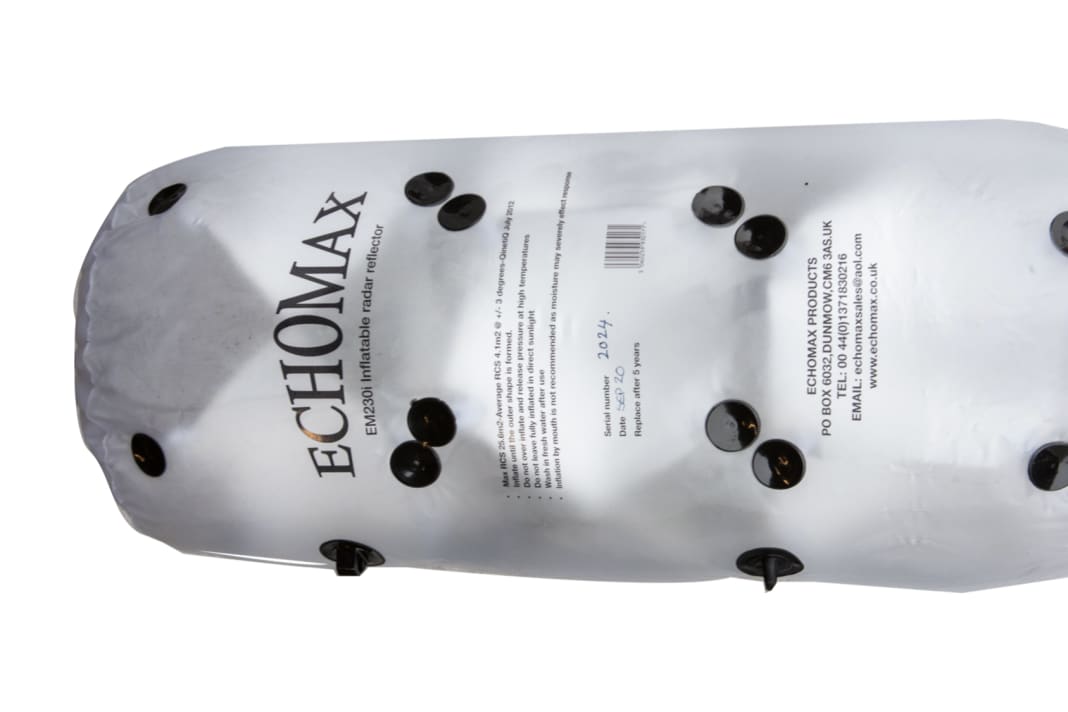


Very good and clear echoes throughout thanks to the large projection surface. Due to the suspended mounting, the reflector is always aligned vertically, so no curved values were measured. Due to its low weight, it is the ideal addition for small cruisers who only want to use the reflector when necessary. As with the ball, we recommend replacing the reflector after five years. However, it is very expensive in comparison.
- Weight: 0.42 kg
- Reflective surface, total: 17 m²
- Price: 296 €
- Distribution: Lindemann KG
- Dimensions: 300 x 750 mm
- Rating: ***
Plastimo inflatable
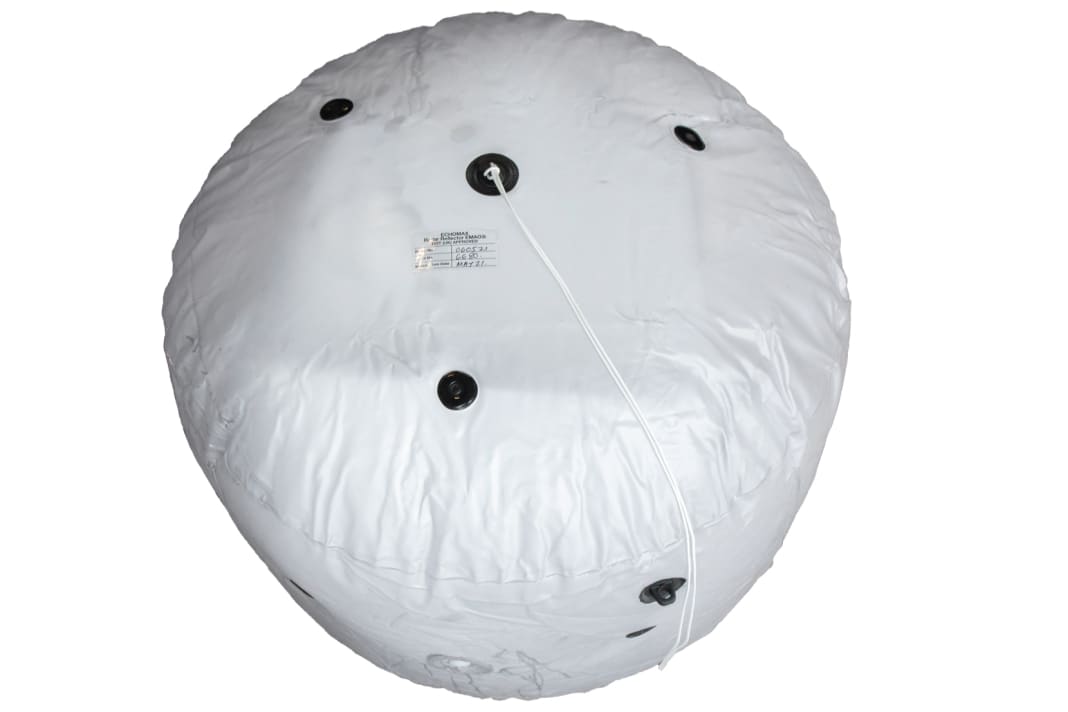


Good visibility at short distances, barely visible at greater distances. As the ball always hangs vertically when it is hoisted on a flag halyard, for example, there were no measurements when tilted. Rather poor echoes despite the comparatively large reflective surface. Unfortunately, the ball was leaking, so that constant re-inflation was necessary. The reflector is very large and light when inflated. Expensive.
- Weight: 0.6 kg
- Reflective surface: 10 m²
- Price: 268,94 €
- Distribution: Bukh Bremen
- Dimensions: 615 mm
- Rating: **
How radar reflectors work

When the signals from the radar device hit the reflector, they are usually deflected twice on the surfaces designed as triple mirrors and reflected back exactly parallel to the path of the incoming beams. They then hit the antenna of the radar unit and can be detected there. The radar unit then analyses both the propagation time and the reception strength of the signals and displays the result as an echo on the screen. The more of the originally emitted signals are received, the larger the echo is displayed on the screen. However, movements of both the radar unit and the reflector can dilute this effect. The size of the reflector also plays a role here. The larger the surface area of the reflector, the less sensitive its reflectivity is to movement.
Special case Lüneburg-Linse
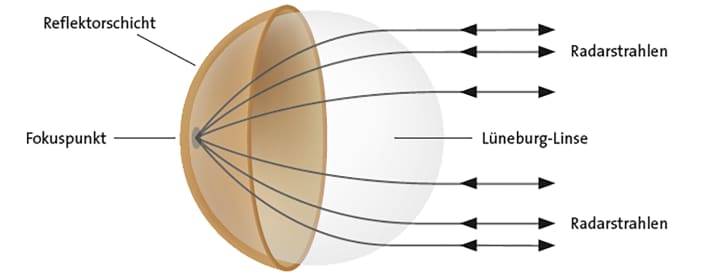
The 3Lenzz works on the principle of the Lüneburg lens. This is a sphere consisting of a dielectric, i.e. a virtually non-conductive material, for example a ceramic. A reflective metal layer is applied to the back. When the radar beams hit the sphere, they are deflected by a refraction effect to a focal point on the back of the sphere. From there they are reflected again. When the beams leave the dielectric sphere, they are refracted in the opposite direction. This sends them back in the direction from which they came.
Radar technology: broadband or magnetron radar?
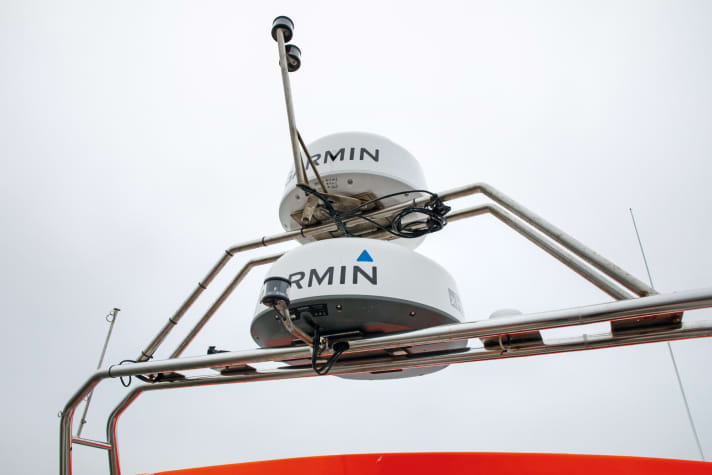
It used to be like this: after the radar unit was switched on, it took quite a while for the first image to be taken. This was because the electron beam tube, the magnetron, had to heat up first. This took time and required a lot of energy. Operating the devices also swallowed up a lot of electricity. So, on long patrols in areas with little traffic, it was only allowed to carry out a sweep every few minutes. If nothing was seen, the device switched back to stand-by mode and only used the energy required to keep the tube at the right temperature.
Modern radar devices solve this differently. There, it is not tubes that generate the signal, but semiconductors. They can also generate signals of different wavelengths. As a result, the radar is available as soon as it is switched on and requires much less power. In addition, the radiation is significantly lower, which is good for the health of the people on board. A broadband or semiconductor radar generates roughly the same radiation as a smartphone. Due to the different wavelengths, the radar can generate even more information from the reflected signals. So-called Doppler radars quickly recognise whether an echo is approaching or moving away and in which direction it is doing so without the need for complex plotting. This makes it possible to calculate the point of closest approach and the time until then.

